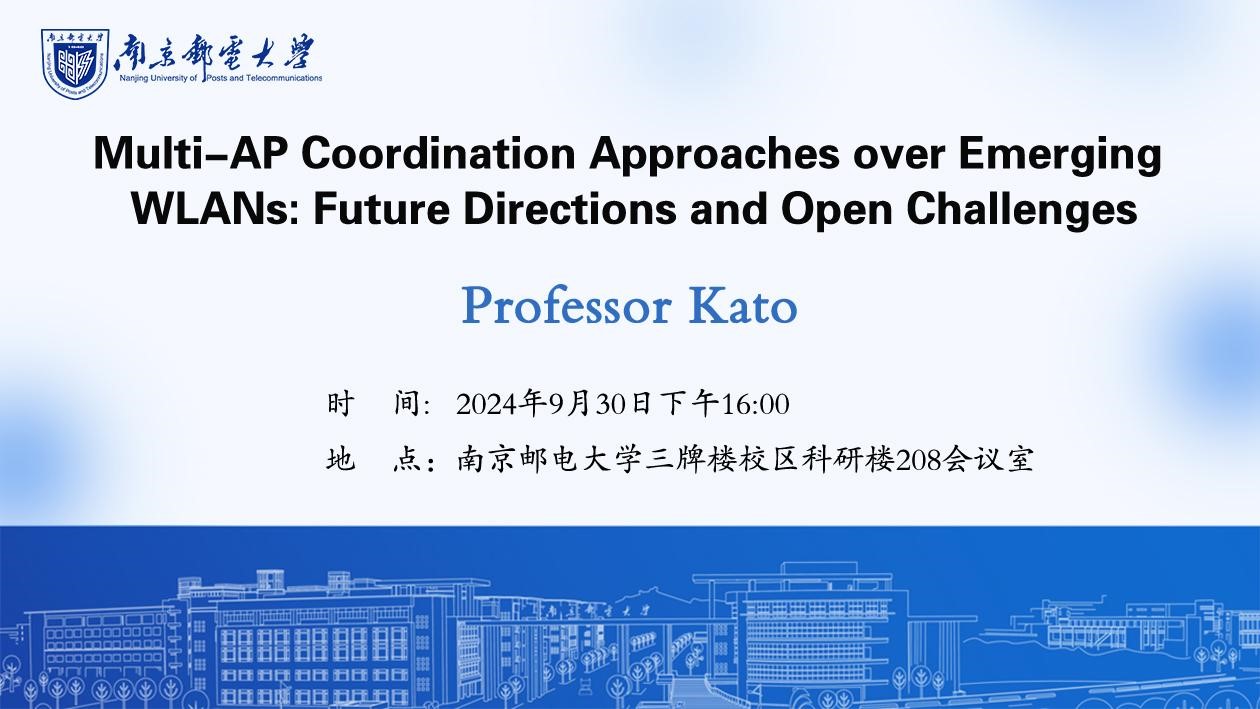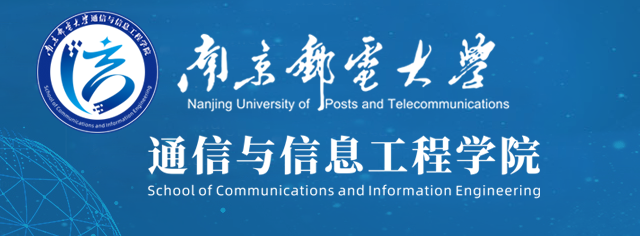报告题目:Multi-APCoordination Approaches over Emerging WLANs: Future Directions and OpenChallenges
报告人:professor kato
报告时间:2024年9月30日 16:00
报告地点:南京邮电大学三牌楼校区科研楼208会议室

professor kato:
Nei Kato is a fullprofessor and the Dean with Graduate School of Information Sciences, TohokuUniversity. He has researched on computer networking, wireless mobilecommunications, satellite communications, ad hoc & sensor & meshnetworks, UAV networks, AI, IoT, and Big Data. He is the Editor-in-Chief ofIEEE Internet of Things Journal, the fellow committee chair of IEEE VTS. He isa Fellow of the Engineering Academy of Japan, a Fellow of IEEE, and aFellow of IEICE.
Abstract:
The 802.11 IEEEstandard aims to update current Wireless Local Area Network (WLAN) standards tomeet the high demands of future applications, such as 8K videos,augmented/virtual reality (AR/VR), the Internet of Things, telesurgery, andmore. Two of the latest developments in WLAN technologies are IEEE 802.11be and802.11ay, also known as Wi-Fi 7 and WiGig, respectively. These standards aim toprovide Extremely High Throughput (EHT) and lower latencies. IEEE 802.11beincludes new features such as 320 MHz bandwidth, multi-link operation,Multi-user Multi-Input Multi-Output (MIMO), orthogonal frequency-divisionmultiple access, and Multiple-Access Point (multi-AP) cooperation (MAP-Co) toachieve EHT. With the increase in the number of overlapping Access Points (APs)and inter-AP interference, researchers have focused on studying MAP-Coapproaches for coordinated transmission in IEEE 802.11be, making MAP-Co a keyfeature of future WLANs. Additionally, the high overlapping AP densities in EHFbands, due to their smaller coverage, must be addressed in future standardsbeyond IEEE 802.11ay, specifically with respect to the challenges ofimplementing MAP-Co over 60GHz bands. In this talk, the state-of-the-art inMAP-Co features and their drawbacks concerning emerging WLAN, several novelfuture directions and open challenges will be provided.

